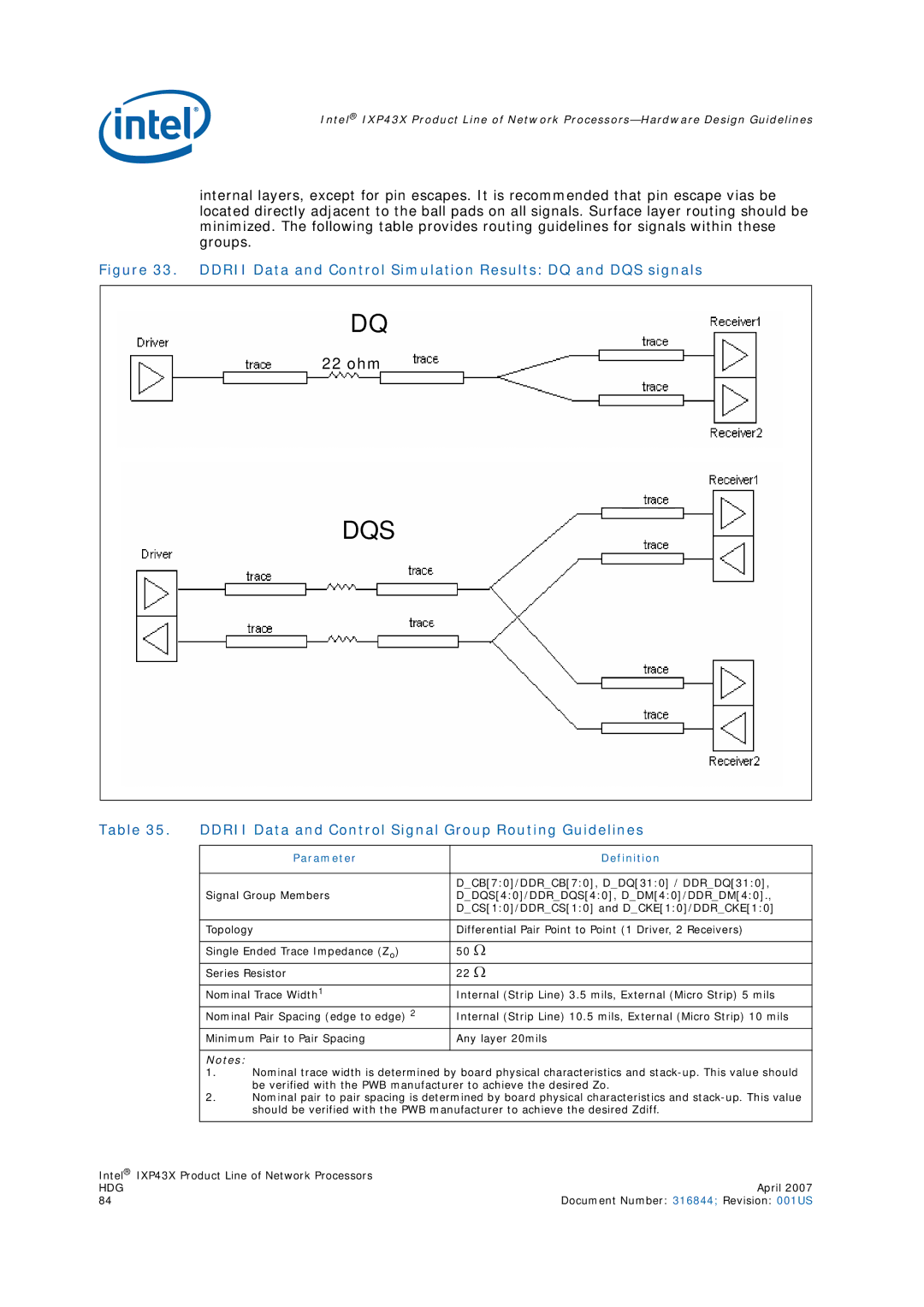
Intel® IXP43X Product Line of Network
internal layers, except for pin escapes. It is recommended that pin escape vias be located directly adjacent to the ball pads on all signals. Surface layer routing should be minimized. The following table provides routing guidelines for signals within these groups.
Figure 33. DDRII Data and Control Simulation Results: DQ and DQS signals
DQ
22 ohm
DQS
Table 35. DDRII Data and Control Signal Group Routing Guidelines
Parameter | Definition |
|
|
| D_CB[7:0]/DDR_CB[7:0], D_DQ[31:0] / DDR_DQ[31:0], |
Signal Group Members | D_DQS[4:0]/DDR_DQS[4:0], D_DM[4:0]/DDR_DM[4:0]., |
| D_CS[1:0]/DDR_CS[1:0] and D_CKE[1:0]/DDR_CKE[1:0] |
|
|
Topology | Differential Pair Point to Point (1 Driver, 2 Receivers) |
|
|
Single Ended Trace Impedance (Zo) | 50 Ω |
Series Resistor | 22 Ω |
|
|
Nominal Trace Width1 | Internal (Strip Line) 3.5 mils, External (Micro Strip) 5 mils |
Nominal Pair Spacing (edge to edge) 2 | Internal (Strip Line) 10.5 mils, External (Micro Strip) 10 mils |
Minimum Pair to Pair Spacing | Any layer 20mils |
|
|
Notes:
1.Nominal trace width is determined by board physical characteristics and
2.Nominal pair to pair spacing is determined by board physical characteristics and
Intel® IXP43X Product Line of Network Processors |
|
HDG | April 2007 |
84 | Document Number: 316844; Revision: 001US |
